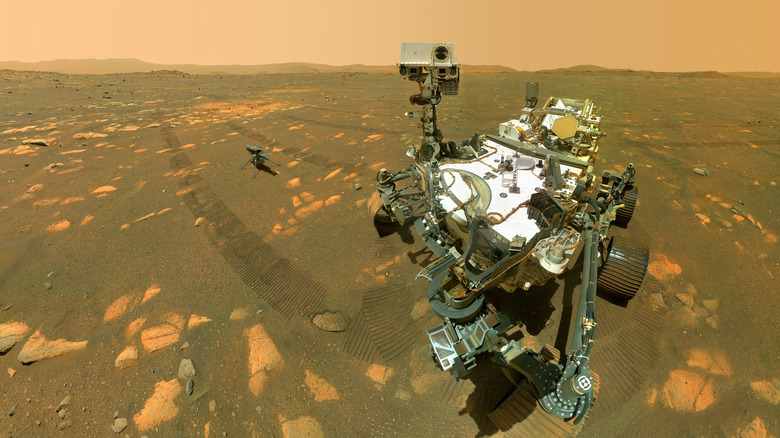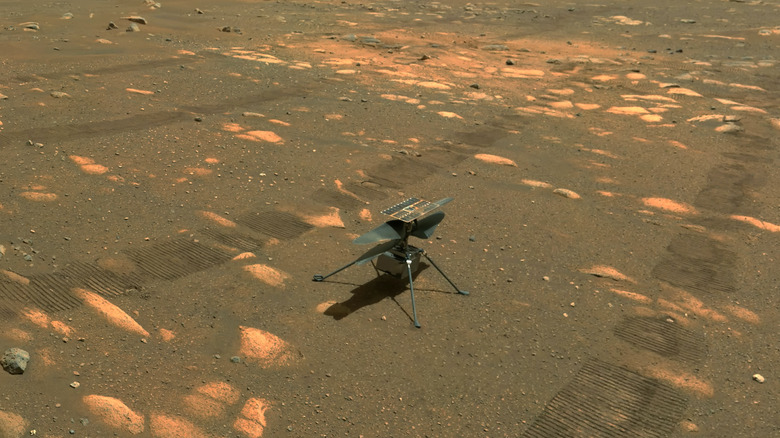Mars Helicopter Performs First Flight After Major Software Correction
The famous Ingenuity helicopter aboard NASA's Mars exploration vehicle just took a small but mighty flight. "Hop" might be a better word. The aircraft took to the sky for all of 18 seconds and made it 16 feet (via Space). The miniature mission came with outsized tension, however. It was Ingenuity's first flight after a major software upgrade, one that significantly altered the its ground sensors to eliminate a potentially mission-critical flaw.
This was Ingenuity's 34th flight since landing with the Perseverance rover on Mars on April 18, 2021. Both rover and helicopter have performed admirably over the last year and a half, collecting indispensable scientific data about Mars' climate, geology and overall makeup. Much of the information it has collected could be vital for future manned missions to the Red Planet. As maps get better, climate and soil analysis more precise, and technology more sustainable, humanity inches closer to finally setting foot on another world.
Firmware update in spaaaaaaaace
The update to the Ingenuity that made the recent flight so tense was a comprehensive correction to its navigation system (per ZDNet). Prior to the update, say NASA officials, the navigation program operated under the assumption that the vehicle would always be over even ground.
Given Mars has, among other terrains, the largest known mountain (per Britannica) and deepest known gorge in the Solar System (via ESA), it does seem like a drawback to have the navigation system of a delicate, fabulously expensive interplanetary helicopter act like it's flat. That said, as any programmers will know, installing new firmware is nothing if not an invitation for things to go awry.
Thus far, that hasn't happened. Ingenuity is still performing its mission and delivering critical data back to Earth. The little helicopter is fundamentally Perseverance's scout, identifying and transmitting back basic data about potential areas of interest. Now that the navigation has been sorted out, we can hope for even more detailed information about one of our closest planetary neighbors.

